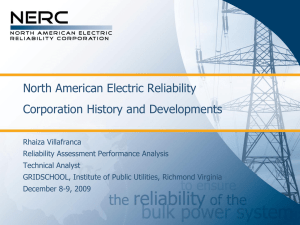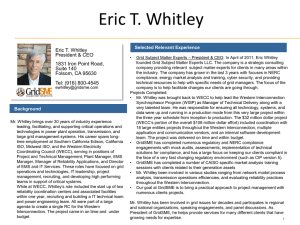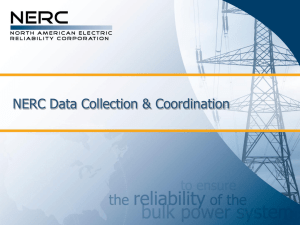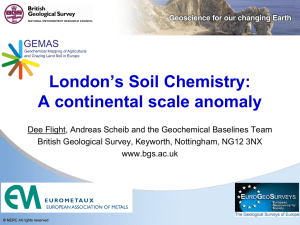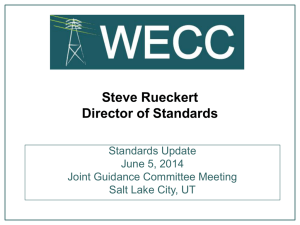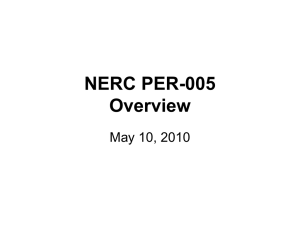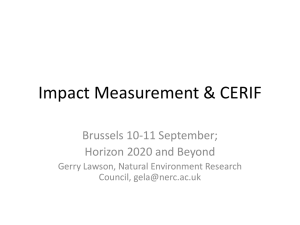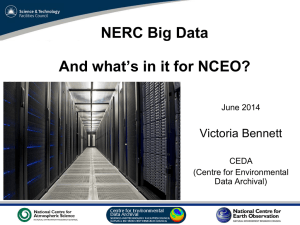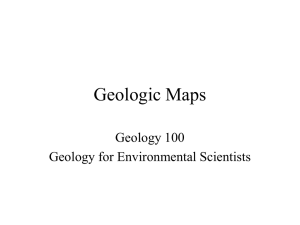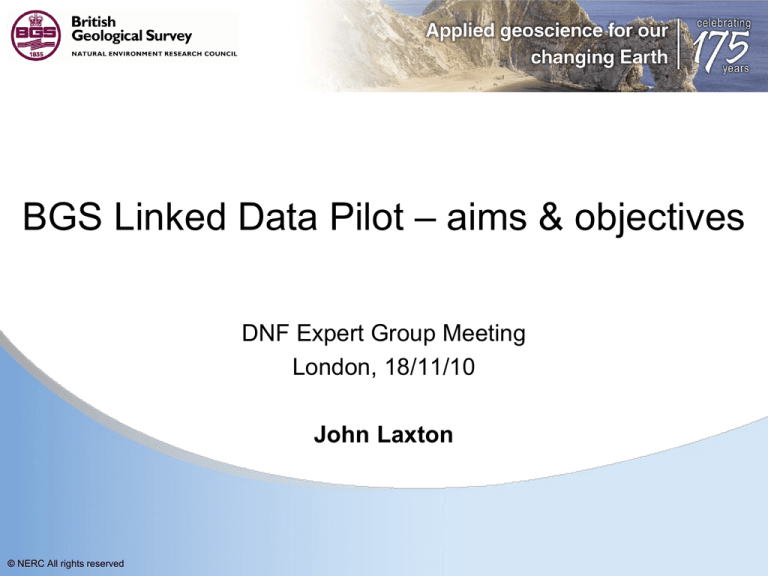
BGS Linked Data Pilot – aims & objectives
DNF Expert Group Meeting
London, 18/11/10
John Laxton
© NERC All rights reserved
We are not experts on linked
data – the aim of the pilot is
to learn!!
The pilot will run through this
winter – about to start
© NERC All rights reserved
Outline of talk
• Background – where we are now
•
•
•
with web dissemination
What are the outstanding
problems?
How we think Linked Data might
help
What we hope to do in the pilot
project
© NERC All rights reserved
Background – where are we
now with web dissemination?
We have developed an international standard for
geoscience data interoperability - GeoSciML
• based on a conceptual model of geoscientific
information drawing on existing data models
implemented in UML
• implemented an XML/GML encoding of the model
subset
• identified areas that require standardised classifications
in order to enable interchange
© NERC All rights reserved
Who is involved?
GA (Australia)
SGU (Sweden)
CSIRO (Australia)
USGS (USA)
VGS (Australia)
AZGS (USA)
BRGM (France)
BGS (UK)
GSC (Canada)
GSJ (Japan)
APAT (Italy)
© NERC All rights reserved
Data Model Packages
•
•
•
•
•
•
•
•
•
•
•
•
Geologic Feature (inc Mapped Feature)
Geologic Unit
Earth Material (lithology)
Geologic Structure
Fossil
Geologic Age
Boreholes & Observations
Geologic Relation
CGI Values
Vocabulary
Metadata
Collection
© NERC All rights reserved
Geologic Unit
© NERC All rights reserved
Vocabularies are being developed
to enable semantic
interoperability
© NERC All rights reserved
Vocabulary topics
•
•
•
•
•
•
•
•
•
•
•
•
•
•
•
•
•
•
•
•
•
Composition part proportion terms
Compound material genesis terms
Constituent part role terms
Composition Category terms
Consolidation degree terms
Contact character terms
Convention codes for planar orientation
specification
Description purpose terms
Determination method terms for
orientation measurements
Earth Material colour terms
Fabric terms
Fault movement sense terms
Fault movement type terms
Feature observation method terms
Geologic contact type terms
Geologic event environment category
terms
Geologic event process category terms
Geologic relationship role type terms
Geologic unit body morphology terms
Geologic unit exposure colour terms
Geologic unit type
© NERC All rights reserved
•
•
•
•
•
•
•
•
•
•
•
•
•
•
•
•
•
•
Geologic unit outcrop character
Lithology categories for Geologic
unit composition
Mapped feature observation
method terms
Metamorphic grade terms
Metamorphic facies terms
Named time ordinal era terms
Particle aspect ratio terms
Particle size terms
Particle sorting terms
Particle shape terms
Particle type terms
Quantity value qualifier
SimpleLithology
Stratified unit bedding pattern terms
Stratified unit bedding style terms
Stratified unit bedding thickness
terms
Stratigraphic rank terms
Vocabulary relationship role terms
But this is still only semantic
interoperability within the
geoscientific community……
© NERC All rights reserved
But the vocabularies are in SKOS:
which enables…….
© NERC All rights reserved
© NERC All rights reserved
GeoSciML was tested and applied
in the eContent-Plus
OneGeology-Europe project
© NERC All rights reserved
Objectives of OneGeology-Europe
•
•
•
•
•
•
•
to bring together a web-accessible, interoperable
geological spatial dataset for the whole of Europe at 1:1
million scale
to develop a harmonised specification for basic
geological map data and make significant progress
towards harmonising the dataset
to accelerate the development and deployment of
GeoSciML
to facilitate re-use and addition of value by a wide
spectrum of users and identify, document and
disseminate strategies for the reduction of technical and
business barriers to re-use
to address the multilingual aspects of access through a
multilingual discovery portal
to move geological knowledge closer to the end-user
To contribute to INSPIRE
© NERC All rights reserved
© NERC All rights reserved
© NERC All rights reserved
OneGeology-Europe and
INSPIRE
•
•
•
One of the objectives of OneGeologyEurope was to ‘contribute to INSPIRE’
Tried to use implementing rules as much
as possible
GeoSciML now being used as the basis
for the INSPIRE Geology data
specification
© NERC All rights reserved
This will lead to GeoSciML
conformant web services,
possibly using common
vocabularies, across Europe.
Problem solved?
© NERC All rights reserved
Outstanding Problems
•
•
Mapping from ‘internal’ concepts to
common ones is very time consuming
and can involve significant loss of
semantic resolution – experience from
OneGeology-Europe
All of this is still geologists talking to
geologists!
© NERC All rights reserved
We want to….
•
•
•
•
•
make our information much more widely
used and useable (semantic publishing)
make our domain knowledge available
be able to integrate information from
other domains more readily with our
information
enable non-geoscientists to query our
information, and receive answers, using
language from their own domain.
be able to link similar, but not identical,
concepts
© NERC All rights reserved
Can Linked Data and the Semantic
Web help with this?
© NERC All rights reserved
© NERC All rights reserved
There is some useful stuff out
there….
© NERC All rights reserved
© NERC All rights reserved
Small Pilot Project to…
•
•
•
•
Learn about Linked Data through ‘doing’
Investigate potential of Linked Data –
does it live up to claims?
Demonstrate potential to BGS
Management
What do we need to do to implement
Linked Data properly?
© NERC All rights reserved
Pilot Project will aim to…
•
•
•
•
Add standard URIs to some vocabulary concepts and
related data items (eg geology map polygons)
Create a small ontology in OWL/RDF linking concepts
in our vocabularies to concepts in SWEET Geology
Make use of the existing mapping between concepts in
SWEET ontologies from different domains
Construct some SPARQL queries using concepts in
non-geology domains to query geological data
© NERC All rights reserved
We hope to find out….
•
•
•
•
•
•
How much effort is involved in building
ontologies?
Can you really construct a Linked Data web
without a specific question in mind?
Could we build ontologies to link to INSPIRE
codelists/vocabularies?
Can we create useful SPARQL queries?
What do we need to do to fill the gaps and is it
practical?
A roadmap for the way forward (which will
depend on what the wider UK spatial data
community does)
© NERC All rights reserved
Questions (or answers)?
© NERC All rights reserved

